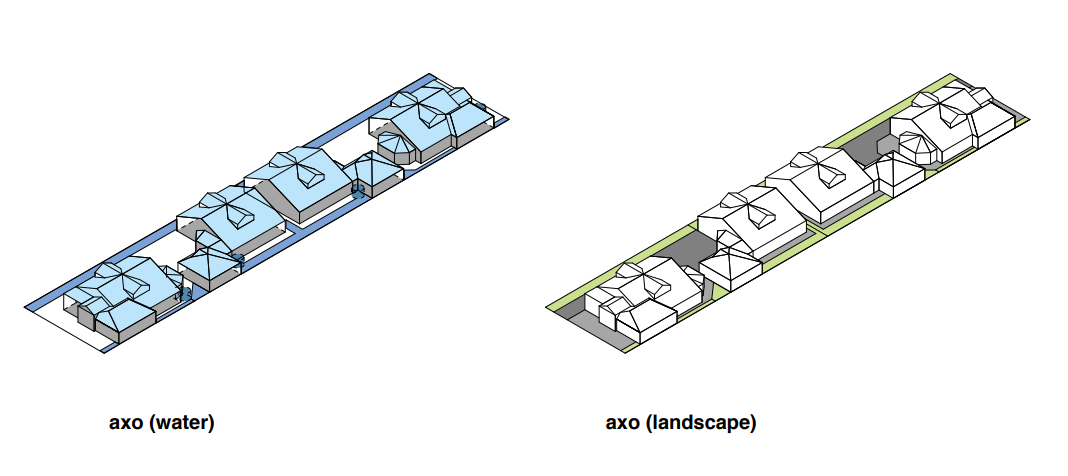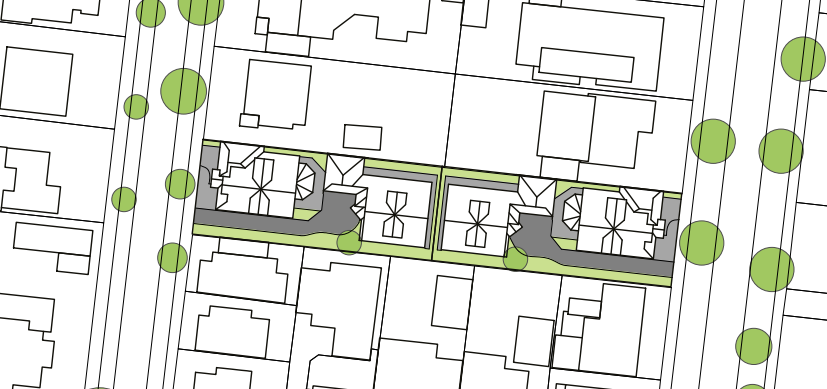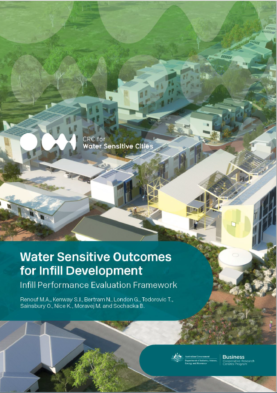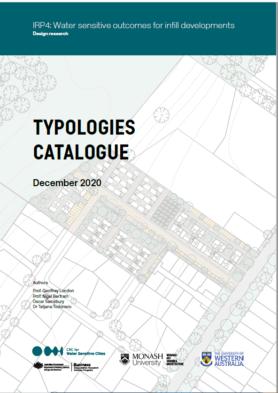Find out how water sensitive
your infill development is
The Infill Performance Evaluation Framework evaluates infill development options at the city, precinct or site scale.
With the framework, you can:
- compare different planned designs
- generate metrics for economic evaluations or building approval processes
- identify targets and objectives for infill development
- predict the impact of new developments.
Interested in benchmarking your city?
Email us admin@crcwsc.org.au
Where to find more information
You’ll find more information about infill development on the following pages:
Useful resources
The framework rates your development against 3 aspects of a water sensitive city
The framework rates the performance of development designs in terms of:
- urban water performance, including natural and human-made flows
- architectural and urban space design
- urban heat effects.
Users enter details about:
- the infill area
- the design scenarios – Existing state (EX), Business as usual (BAU) and Alternative state (WS)
- environmental parameters – e.g. rainfall, soil type
- built form parameters (for site-scale analysis) – e.g. building dimensions, surface types, vegetation
- urban design parameters (for precinct-scale analysis) – e.g. density of built forms, areas of roads, areas of green space, vegetation types, water storage
- water servicing parameters – indoor/outdoor water demand, rainwater/stormwater harvesting, wastewater recycling.
Using this information, the framework rates performance against the 3 aspects of a water sensitive city using indicators such as:
- water efficiency
- stormwater discharge
- outdoor space quality
- dwelling amenity and function
- urban heat.


Results can be displayed graphically
You can see how well your infill development performs graphically, on a spider chart. Each axis represents the performance of an indicator, scaled from bad performance (0% in the centre) to good performance (100% at the perimeter), so all axes have the same scale. The results for each indicator axis are connected to produce a performance envelope. The larger an envelope size, the better the performance.
You can include as many indicators as you want, but a large number of indicators will make it difficult to interpret the diagram. We recommended reporting the set of indicators that are most relevant and important for the case. The relative importance of each performance criteria will depend on local conditions (and e.g. whether downstream flooding, water security, urban heat, or other aspects are important).

